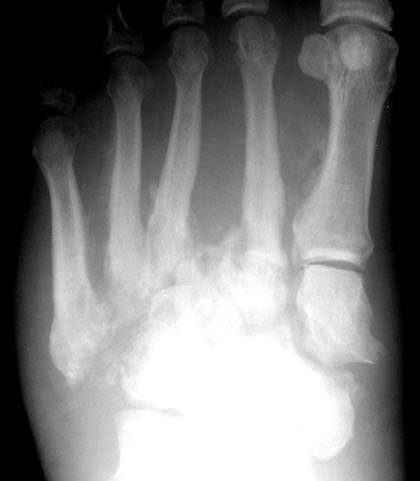CROW - Charcot Restraint Orthotic Walker
What is a CROW Brace?

The Charcot Restraint Orthotic Walker, or CROW, is a stable boot designed to accommodate and support a foot with Charcot
neuroarthropathy. The CROW consists of a fully enclosed ankle/foot orthotic with a rocker-bottom sole. It is a common treatment used after the acute charcot foot has calmed down.
What is Charcot deformity?
This occurs when bones and joints in the foot fracture, break up or pop out of place with minimal or no known direct injury. In the United States, this deformity is most commonly seen in people with diabetes. The foot first enters an acute stage of swelling, warmth and redness, which eventually diminish. Broken bones and dislocations can occur, causing severe deformities of the foot and ankle. Some patients develop pain or ulcers when the affected foot becomes deformed. CN can affect the other foot or happen again in the same foot. The foot does not regain its normal shape.
What is a CROW made of?
The boot is custom made for each patient’s foot. The outer shell consists of two plastic or fiberglass clamshell pieces that fit and are strapped together with Velcro. It is sturdy and can prevent other bones from cracking or breaking and can be walked on. The bottom of the boot has a rounded rocker-bottom shape. The boot contains a custom, removable foam insole. Each insole is adjusted to distribute weight equally and also to support the ankle joint.
What does the boot do?
The CROW functions by providing even support to the entire foot, especially to areas that are overstressed due to the neuroarthropathy. These deformities often cause the foot to bend out of shape. The resulting stress on the foot can cause ulcers, which can develop into severe infections if left untreated. By distributing pressure equally throughout the leg and foot, the CROW removes excessive forces and gives the foot time to heal. It is easier to use than a cast, can be removed for wound care and washing, and is more durable.
Which patients can use the CROW?
Patients with acute Charcot can begin using the CROW after the swelling has receded. This can take months. Patients with mild to moderate deformities will benefit most from the CROW. Patients with severe deformities or extreme foot/ankle instability may need surgery instead of using the CROW.
How does it affect daily life?
Fortunately, the CROW is adaptable to daily life. Because of the clamshell design, the patient can easily remove the boot in order to keep the foot clean and sleep better. In addition, its fitted shape and good support allow people to return to walking, standing and driving more normally.
What are typical outcomes?
The most important outcome is that patients are able to continue to bear weight while minimizing pressure and giving the foot a chance to heal. Healing may require many months. However, the disease process may return and/or affect the other foot, so regular and lifelong monitoring of the condition is necessary.
What are the possible complications?
Despite the sturdiness of the boot and the distribution of forces, the bones of the foot could still break. The foot could develop open sores, though the boot is designed to prevent it. As always with Charcot deformity, some joints may heal incorrectly or not at all. Unfortunately, other factors such as poor glucose control and bad nutrition can prevent healing despite use of a CROW.
Frequently Asked Questions
What options do I have when my foot is still swollen?Patients often wear special casts until their feet stop swelling enough for them to use a CROW. The cast serves to stabilize the foot and prevent unstable motion, similar to the CROW. However, unlike the CROW, these casts cannot be removed.









